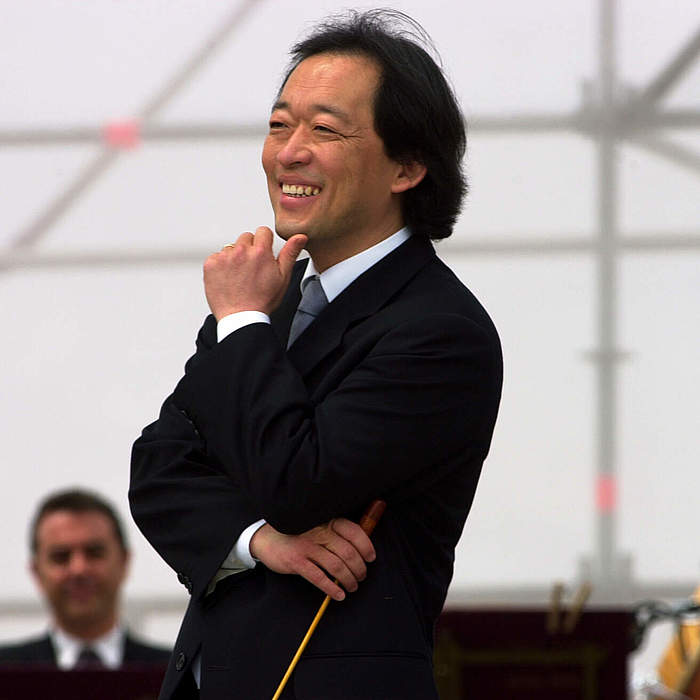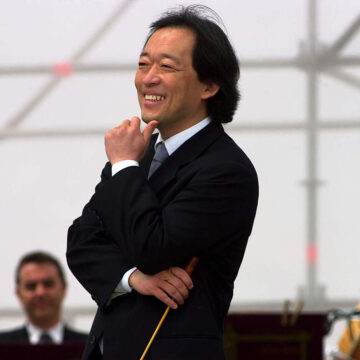The year 2024 marks the bicentenary of Anton Bruckner’s birth, one of the greatest symphonists of the 19th century. Since the era of Mengelberg and especially Bernard Haitink, the Royal Concertgebouw Orchestra is undoubtedly one of the most splendid interpreters of Bruckner’s music in the world, alongside the Vienna Philharmonic. This year provides an opportunity to listen to these powerful symphonies in the prestigious Amsterdam concert hall, where renowned conductors will each take on one of the Master of Saint Florian’s symphonies. On January 17th, Myung-Whun Chung took the stage with a program that combined Mozart and Bruckner.

The evening began with a delightful performance of Mozart’s Piano Concerto No. 17, featuring Emanuel Ax as the soloist. Composed in 1784 for one of Mozart’s students, Babette Ployer, this concerto emphasizes grace and spirit over virtuosity. However, Ax’s performance that evening proved somewhat disappointing. Despite his technical precision, he lacked the essential dreamy poetry required to breathe life into this piece. The sound, lacking in imagination and depth, left little room for emotion. Nonetheless, there were some beautiful moments.
The first movement, Allegro, set the tone, with the wind instruments of the RCO taking the spotlight, at times overshadowing the piano. A dreamy, expressive, and occasionally expansive movement allowed for the appreciation of crystalline sound, in harmony with an orchestra renowned for its excellence. There was no mischievousness or lightness here, but rather an excursion anticipating Romanticism with some Schumann-like daring moments. The Andante began with a beautiful oboe solo, reminiscent of Schubert, in a gravity that suited the dark tones of the orchestra. Perhaps it was in this movement that Emanuel Ax was most comfortable, displaying sovereign touch, a broad perspective, lyricism, and a concentrated depth that recalled Pollini. The third movement, Allegretto, was arguably the weakest point of this performance, in contrast to the heights of the Andante. Chung adopted a somewhat cautious tempo, and the interpretation lacked inventiveness and risk-taking. It was a serious Mozart, characterized by understated nobility, and one preferred the sonorous hedonism of the bassoon, flute, or oboe. The conductor skillfully distinguished the orchestral sections, creating a sonic feast, but Emanuel Ax’s piano remained somewhat in the background. The final bars of the Presto, triumphant and luminous, seemed to unfold the victory of light after the melancholy of the Andante, but without flame or invention. It was very beautiful but too restrained, and what one would remember most was the orchestra’s sonic perfection. Ax, of course, received applause, but not triumph, and his interpretation left something to be desired, with the absence of an encore leaving a sense of incompleteness.
The second part of the evening, dedicated to Anton Bruckner’s Symphony No. 7, was highly anticipated. However, despite a clear and technically flawless performance by the orchestra, it may have lacked the audacity and transcendence expected. The interpretation was undoubtedly airy, and the orchestra’s sound was unquestionably beautiful, but it lacked daring, vision, and above all, spirituality. It was a well-executed reading but lacked the soul that could have elevated this performance beyond a mere display of virtuosity. Of course, it would be inappropriate to criticize the orchestra’s excellence or its technical capabilities, as it is among the world’s greatest orchestras.
In the first movement, the orchestra opened up grandiose landscapes, evoking the Upper Austria and the blue-tinted horizons that Friedrich had painted. Unfortunately, the tempo was a bit too fast, making the scenery pass by too quickly, instead of allowing for a slower contemplation of the snowy peaks and domes that this music suggests. The interpretation was characterized by clarity and precision, reminiscent of Kent Nagano’s style, devoid of pathos or sentimental outpourings. A highly successful timpani effect with a deep and continuous rumble before an explosion created an inspired and galvanizing coda. The second movement, Adagio, felt somewhat detached, lacking any sense of mourning; we were far from the heartfelt tribute to Wagner, and the performance leaned towards a page without great fervor. However, some beautiful moments caught one’s attention, especially the smiling and luminous passages that emerged from a discourse that contradicted historical interpretations. The somber and solemn sound of Wagnerian tubas and the sharp cymbal crashes at the climax of the final crescendo at times recalled Solti’s dynamic approach with the Chicago Symphony Orchestra, emphasizing brass and their mass over emotion, prioritizing almost excessive precision and intellectualization. The texture was lightened, but it must be admitted that boredom lurked at times. The third movement was very fast, nervous, and breathless, evoking a wild ride with aggressive and fierce brass and an exceptional timpanist. Finally, the fourth movement, light and optimistic, persisted in echoing certain brass characteristics of American orchestras, with a glorious sound, although sometimes a bit rushed and noisy.
One could say that this interpretation offered a perfectly executed tour program, presented as a beautifully wrapped gift. However, one might wonder where the transcendence, emotion, and mysticism were in this interpretation. It seemed that Chung was less at ease with Bruckner than with Mahler. If I may share a personal memory, I found this conductor much more convincing in his bold and unprecedented interpretation of Mahler’s Ninth Symphony in Geneva with the same RCO, where his commitment and spirituality deeply moved me. Unfortunately, despite warm applause and despite the orchestra’s technical perfection, one left feeling slightly unsatisfied after witnessing a beautiful reading of Bruckner’s Seventh Symphony. A reading, therefore. Not a vision.
Philippe Rosset
January 17, 2024




